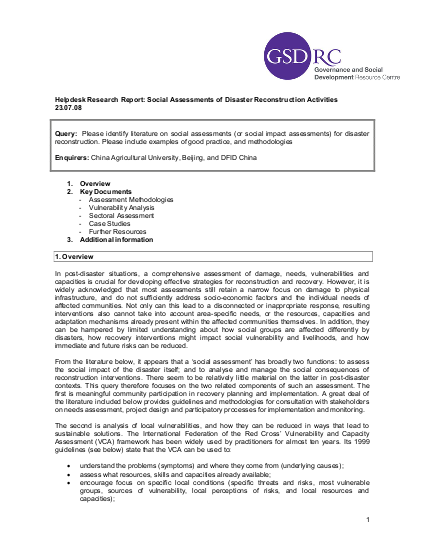
In post-disaster situations, a comprehensive assessment of damage, needs, vulnerabilities and capacities is crucial for developing effective strategies for reconstruction and recovery. However, it is widely acknowledged that most assessments still retain a narrow focus on damage to physical infrastructure, and do not sufficiently address socio-economic factors and the individual needs of affected communities. Not only can this lead to a disconnected or inappropriate response, resulting interventions also cannot take into account area-specific needs, or the resources, capacities and adaptation mechanisms already present within the affected communities themselves. In addition, they can be hampered by limited understanding about how social groups are affected differently by disasters, how recovery interventions might impact social vulnerability and livelihoods, and how immediate and future risks can be reduced.